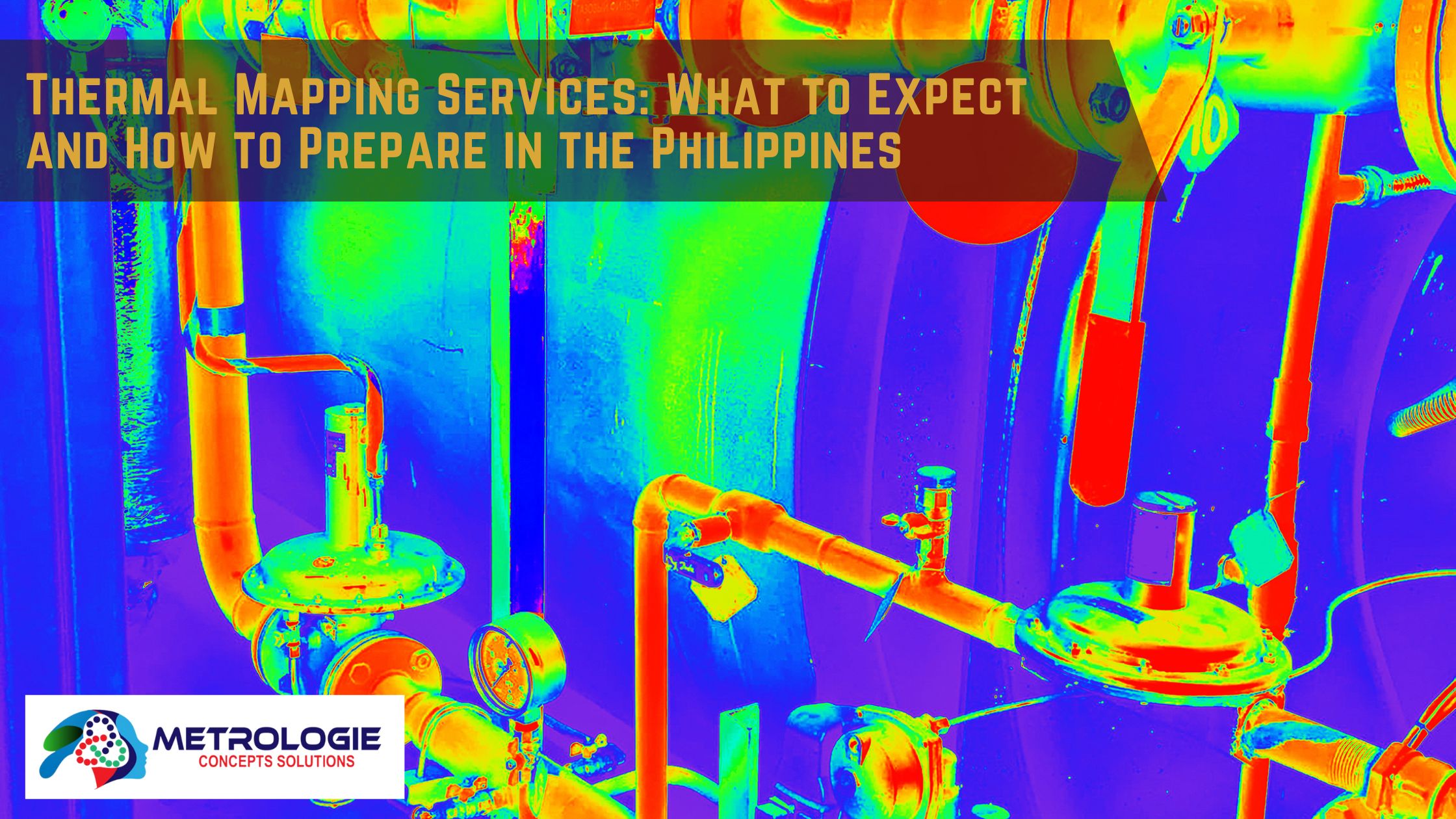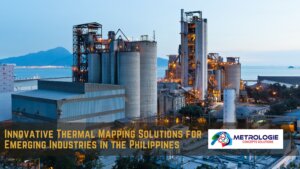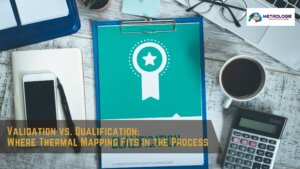Introduction
Thermal mapping services play a critical role in industries where temperature control is essential, such as pharmaceuticals, food storage, and electronics manufacturing. In the Philippines, businesses increasingly rely on thermal mapping to ensure regulatory compliance, maintain product integrity, and optimize operational efficiency. Thermal mapping helps identify temperature variations across different areas of a facility, ensuring that temperature-sensitive products remain safe throughout their journey.
This comprehensive guide explores what thermal mapping services entail, what to expect from the process, and how Filipino businesses can prepare their facilities for a successful thermal mapping exercise.
1. What is Thermal Mapping?
a. Understanding Thermal Mapping
Thermal mapping is the process of measuring and analyzing temperature variations across different zones of a facility or equipment over a specific period. The goal is to ensure that temperature-sensitive areas remain within the desired temperature range to maintain product quality and meet regulatory requirements.
Common areas where thermal mapping is used include:
- Storage facilities: Warehouses and cold storage units.
- Transportation: Refrigerated trucks and containers.
- Production areas: Pharmaceutical manufacturing lines and food processing units.
- Critical equipment: Incubators, freezers, and climate-controlled rooms.
b. Why is Thermal Mapping Necessary?
Temperature variations can have significant consequences for businesses that rely on controlled environments. In the pharmaceutical industry, for example, improper temperature conditions can lead to product degradation, reducing drug efficacy and safety. In the food industry, thermal variations can lead to spoilage and contamination.
By conducting regular thermal mapping, businesses can:
- Identify temperature fluctuations and hot or cold spots.
- Ensure regulatory compliance with standards such as Good Distribution Practices (GDP) and Good Manufacturing Practices (GMP).
- Optimize energy efficiency and reduce operational costs.
- Safeguard temperature-sensitive products from damage or degradation.
2. Key Components of Thermal Mapping
a. Data Loggers and Sensors
Thermal mapping relies on data loggers and sensors to collect temperature data over a specific period. These devices are strategically placed in different zones of a facility to measure temperature at set intervals. Data loggers must be carefully chosen to meet the specific requirements of the industry and environmental conditions.
Some key considerations when selecting data loggers include:
- Accuracy: Data loggers should have a high level of precision to detect even small temperature variations.
- Durability: Data loggers must withstand environmental conditions, such as humidity and vibration, without compromising their performance.
- Battery life: Since thermal mapping is conducted over extended periods, data loggers should have sufficient battery life to last throughout the mapping period.
b. Mapping Period
The duration of a thermal mapping exercise typically depends on the facility and the environmental conditions being measured. Mapping should be conducted over at least 24 hours to capture both day and night temperature variations. However, in some cases, thermal mapping can extend over multiple days to ensure accurate data collection.
c. Placement of Sensors
Strategic sensor placement is critical to a successful thermal mapping exercise. Sensors are usually placed at different heights, corners, and areas that are more prone to temperature variations, such as near windows, doors, and air vents. Correct placement ensures a comprehensive understanding of temperature distribution within the facility.
3. Industries that Require Thermal Mapping Services
Several industries in the Philippines benefit from thermal mapping services. The primary industries include:
a. Pharmaceuticals
The pharmaceutical industry is highly regulated, with strict guidelines for maintaining temperature-controlled environments. Good Distribution Practices (GDP) require that pharmaceuticals be stored and transported within specific temperature ranges to ensure product integrity.
Thermal mapping in this industry ensures that storage facilities and transport vehicles maintain the required temperature conditions for products such as vaccines, biologics, and temperature-sensitive medications.
b. Food and Beverage
In the food and beverage industry, temperature control is essential to prevent spoilage and contamination. Cold storage facilities, refrigerated trucks, and processing plants must maintain specific temperature ranges to ensure food safety.
Thermal mapping helps identify temperature variations that could lead to foodborne illnesses or product waste. By ensuring that cold chains remain unbroken, thermal mapping promotes safety and regulatory compliance in the food industry.
c. Electronics
The electronics industry requires precise temperature control to prevent damage to sensitive components during manufacturing and storage. Excessive heat or cold can cause malfunctions, reducing the lifespan and reliability of electronic devices.
Thermal mapping in electronics manufacturing facilities ensures that production lines and storage areas maintain stable temperatures, preventing costly equipment failures and product defects.
d. Healthcare
In healthcare, equipment such as refrigerators and incubators must operate within specific temperature ranges to preserve medical supplies, vaccines, and biological samples. Thermal mapping is critical for ensuring the reliability of temperature-sensitive equipment, particularly in hospitals, clinics, and research laboratories.
e. Agriculture
In the agriculture sector, thermal mapping is used in controlled environment agriculture (CEA) systems, such as greenhouses, where precise temperature control is essential for optimizing crop yield. Thermal mapping ensures that crops are grown under optimal conditions, reducing waste and maximizing productivity.
4. What to Expect from Thermal Mapping Services
When you partner with a thermal mapping service provider in the Philippines, the process typically follows these steps:
a. Initial Assessment and Consultation
The first step in the thermal mapping process is an initial assessment and consultation. The service provider will evaluate your facility, equipment, and processes to understand your specific thermal mapping needs. This stage helps determine the number of sensors required, the mapping duration, and the ideal placement of data loggers.
During this phase, the service provider will also review your industry-specific regulatory requirements to ensure that the thermal mapping meets the necessary standards.
b. Placement of Data Loggers and Sensors
Once the initial assessment is complete, the service provider will deploy data loggers and sensors throughout your facility. These devices are placed in strategic locations to capture accurate temperature readings over the mapping period.
c. Data Collection and Monitoring
The data loggers continuously monitor and record temperature readings at pre-set intervals, typically every 5 to 15 minutes. This data is collected over a period ranging from 24 hours to several days, depending on the scope of the mapping exercise.
Throughout the mapping process, the service provider may check the equipment to ensure that all devices are functioning properly and recording data accurately.
d. Data Analysis and Reporting
Once the mapping period is complete, the collected data is analyzed to identify temperature variations, hot spots, and areas where the temperature may fall outside the required range. The service provider will generate a detailed report that includes graphical representations of temperature fluctuations and an analysis of the overall thermal profile of the facility.
The report will also include recommendations for addressing any issues identified during the mapping process, such as adjusting HVAC systems, improving insulation, or relocating temperature-sensitive products.
e. Recommendations and Corrective Actions
Based on the results of the thermal mapping exercise, the service provider will offer recommendations for corrective actions to optimize temperature control in your facility. This may include adjustments to your HVAC system, rearranging product placement, or implementing energy-saving measures to improve temperature stability.
5. Preparing for Thermal Mapping: What Filipino Businesses Need to Know
To ensure a smooth and successful thermal mapping process, Filipino businesses should take the following steps to prepare their facilities:
a. Conduct Pre-Mapping Inspections
Before the thermal mapping exercise begins, it’s essential to conduct a pre-mapping inspection of your facility. Check for any obvious issues, such as poorly sealed doors, windows, or air vents that could affect temperature control. Addressing these issues in advance can help ensure more accurate mapping results.
b. Coordinate with Stakeholders
Coordinate with all relevant stakeholders, including facility managers, maintenance personnel, and production teams, to ensure that everyone is aware of the mapping process. Clear communication ensures that operations proceed smoothly and that any disruptions caused by the placement of data loggers are minimized.
c. Set Baseline Expectations
Work with your service provider to set clear expectations for the thermal mapping process, including the duration of the mapping, the areas to be monitored, and the expected outcomes. Having a clear understanding of what the mapping will achieve will help ensure that the results are actionable and relevant to your operational needs.
d. Plan for Corrective Actions
Thermal mapping is just the first step in optimizing temperature control in your facility. Once the mapping is complete and the results are analyzed, be prepared to implement the recommended corrective actions. This may include adjustments to your HVAC system, reconfiguring storage areas, or improving insulation.
By taking these steps, you can ensure that your facility is fully prepared for the thermal mapping process and that the results will help improve temperature control and regulatory compliance.
6. Choosing the Right Thermal Mapping Service Provider in the Philippines
Selecting the right thermal mapping service provider is critical to ensuring accurate and reliable results. Here are some key factors to consider when choosing a provider:
a. Experience and Expertise
Look for a provider with extensive experience in thermal mapping across various industries, including pharmaceuticals, food storage, and electronics. A provider with industry-specific expertise will be better equipped to understand your unique requirements and provide tailored solutions.
b. ISO/IEC 17025 Accreditation
Make sure that the service provider is ISO/IEC 17025 accredited. This accreditation ensures that the provider follows internationally recognized standards for calibration and measurement, providing you with accurate and reliable results.
c. Advanced Technology
Choose a provider that uses advanced data loggers and sensors with high precision and durability. The right equipment is essential for capturing accurate temperature data and ensuring that the mapping results are reliable.
d. Comprehensive Reporting
Ensure that the service provider offers detailed reporting that includes both graphical representations and actionable recommendations. A comprehensive report will help you understand the thermal profile of your facility and identify areas for improvement.
Conclusion
Thermal mapping services are essential for ensuring temperature control and regulatory compliance in a wide range of industries, from pharmaceuticals to electronics manufacturing. By understanding what to expect from the thermal mapping process and how to prepare your facility, Filipino businesses can optimize their operations, improve product integrity, and maintain compliance with industry regulations.
Whether you’re in food storage, healthcare, or agriculture, thermal mapping is a valuable tool for maintaining quality and efficiency in temperature-sensitive environments. Choose a trusted service provider in the Philippines with ISO/IEC 17025 accreditation to ensure accurate and reliable results that will benefit your business in the long run.




